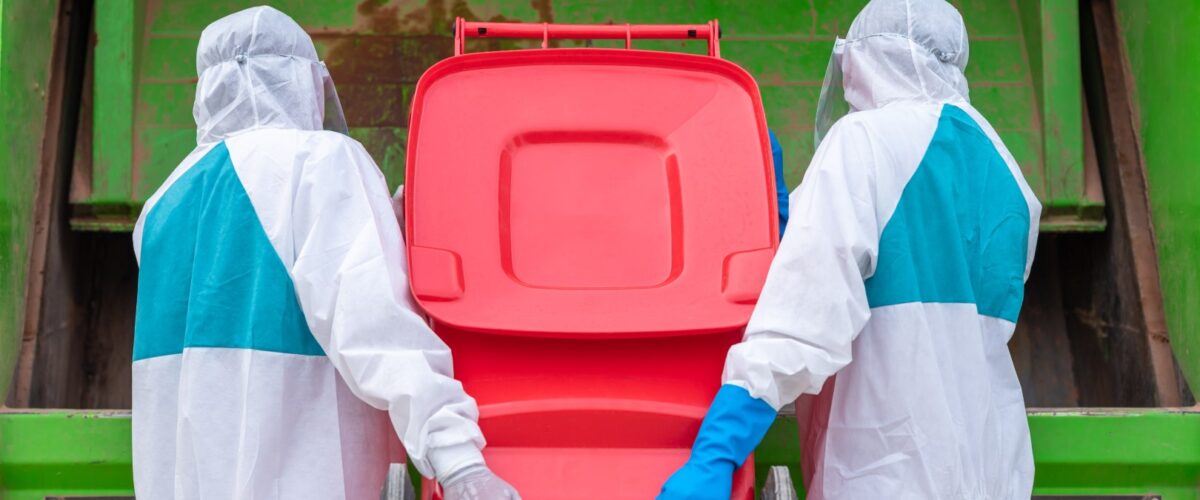- California Department of Toxic Substances Control (DTSC).
- Certified Unified Program Agency (CUPA).
- U.S. Environmental Protection Agency (EPA).
California’s tiered permitting system regulates hazardous waste treatment based on risk levels. Facilities must acquire permits matching their waste quantities and treatment methods. CDMS expertly navigates the complex process – evaluating operations, determining appropriate tiers, filing notifications, providing professional engineer certifications, developing mandated programs, and more. California Title 22 requires that TSDF’s (hazardous waste Treatment, Storage, and Disposal Facilities) to have a permit to treat hazardous waste. Hazardous Waste Treatment is defined in the law as follows: Any method, technique, or process which is not excluded from the definition of treatment and which is designed to change the physical, chemical, or biological character or composition of any hazardous waste or material contained therein, or which removes or reduces its harmful properties or characteristics for any purpose. While not a full list, some common treatment activities are: CDMS prepares the necessary documentation to comply with the Hazardous Waste Treatment Tiered Permitting regulation for facilities treating hazardous waste, including: What are the 3 tiers in California’s program? What types of treatment require a tiered permit? How do I determine which tier applies to my facility? What reporting is required for Tier I? Does Tier I require contingency and emergency response plans? What is the process for obtaining a Tier I permit? How often do I need to resubmit notifications for Tier I? Can I modify my tier or waste types without reapplying? How long does it take to get a tiered permit? Will I get inspected under a tiered permit? What are the record keeping requirements? What happens if I operate outside my approved tier? How long are tiered permits valid? Can I store waste under a treatment tiered permit? Does a tier permit allow land disposal? Do I need to certify closure of treatment units? When do I need to conduct staff training? What if my treatment process changes? How can violations affect my permit? Tiered Permitting
Regulatory bodies
Who needs it
Regulation reference
What our service provides:

Request a Free EHS Compliance Assessment
Tier I is for small quantity waste treatment. Tier II covers treatment of wastes excluded from federal regulation and some reactive wastes. Tier III is required for extremely hazardous wastes like dioxins or large quantities of waste.
Common treatment methods like neutralization, phase separation, precipitation, filtration, drying to remove water, crushing containers, and other processes that change the physical, chemical or biological character of the hazardous waste.
You need to thoroughly evaluate all waste types you are treating, the specific treatment processes involved, and the quantities of waste handled to determine your proper tier. DTSC guidance documents outline qualifying criteria.
Initial notification before conducting treatment activities and annual notifications by March 1st each year. You must also certify closure of any tanks, containers or containment buildings used.
No, contingency planning and emergency procedures are only mandatory under Tiers II and III.
You submit a notification form to DTSC providing all required information about your facility, wastes, and treatment processes. Once submitted, you can operate in compliance with the guidance manual.
You must re-notify annually by March 1st and certify that your activities remain within Tier I requirements, even if nothing has changed. This renews your authorization.
Yes, you can submit a Tier Change Notification or Waste Type Addition Notification to DTSC and once approved, modify your activities without reapplying.
Typically DTSC will finalize your tiered permit within 90 days of receiving a complete notification form, allowing you to begin operating as specified.
Yes, DTSC conducts routine unannounced inspections of Tier I and II facilities. Tier III undergoes extensive permitting and is inspected regularly.
You must maintain records like waste analysis plans, manifests, inspection logs, equipment maintenance, training, and any lab analyses for at least 3 years.
You may be subject to enforcement action including fines if you are found to be violating your permit by treating prohibited wastes or exceeding operational limits.
Your tiered permit remains valid as long as you submit timely annual re-notifications and comply with the conditions of your authorized tier.
No, tiered permits only allow temporary storage directly related to the ongoing treatment processes. Separate tiered permitting for storage is required.
No, the tiers only authorize specific treatment processes. Land disposal would require a full hazardous waste facility permit.
Yes, you must submit an independent registered engineer’s certification for any tanks, containers, or containment buildings upon permanent closure.
Facility personnel must undergo initial and annual refresher training on waste handling, emergency response, and operating procedures relevant to their tiered permit.
You must submit a revised notification form to DTSC within 90 days if your treatment processes change substantively.
DTSC can revoke your authorization to operate under the tiers if inspections reveal serious violations of your permit conditions.



